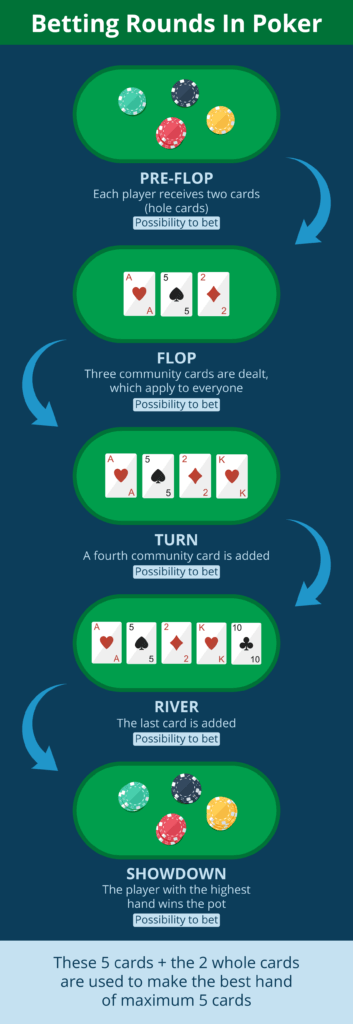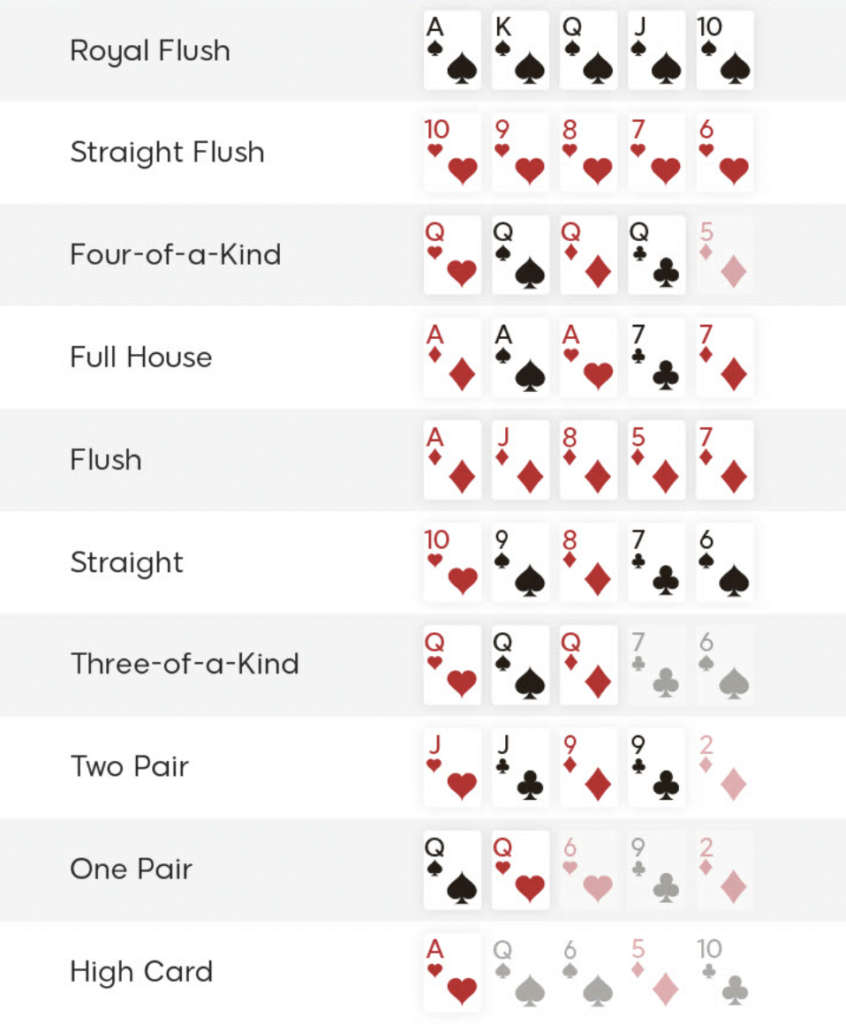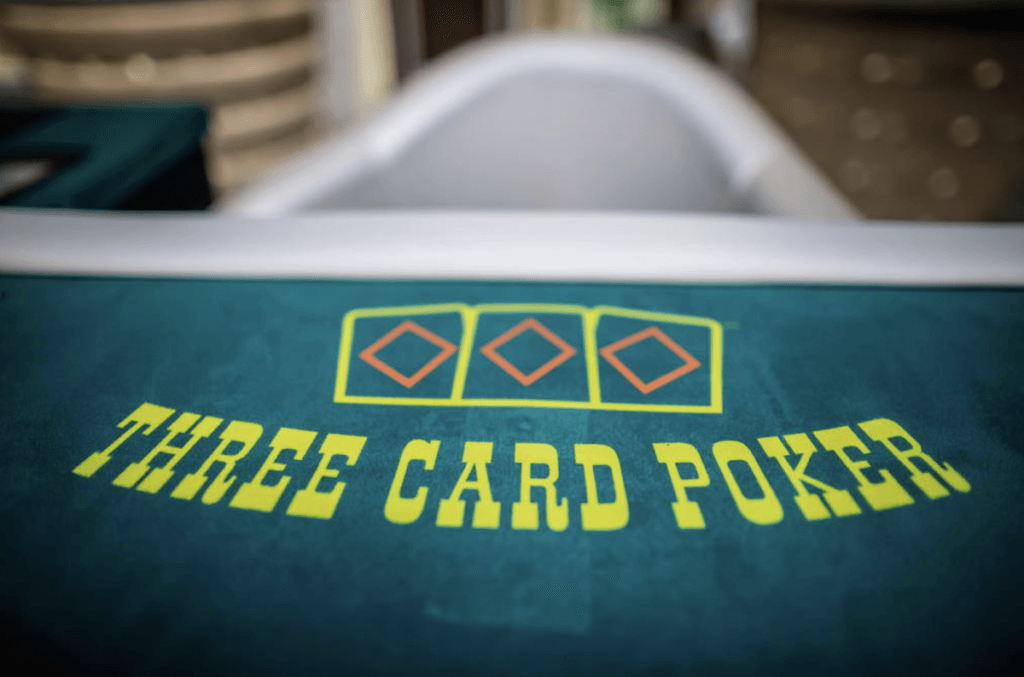Check the Basics of Poker Rules and Improve Your Odds
To enjoy a poker game, you should understand the basic poker rules, types of bets, and pot odds. Knowing the basics will give you the confidence to call, raise or win the pot in a poker round. Read on and learn how to play, and find out about bonuses such as no deposits and win the game.
Master the Rules of Poker
Poker is one of the most popular card games in the world. If you want to join in on the excitement, learning to play poker is simple. The next sections will walk you through the fundamentals of poker. Check out sites such as WSOP and PokerStars and read our reviews on the best places to play online poker.
Rule Variations
Poker is a widely popular card game that is available in different variants. These variants may differ in the number of decks and cards in play, the number of cards dealt face down or up, and the number of community cards.
The most popular poker variants are Texas Hold’em, Carribean Stud Poker and Three Card Poker.
Stud Poker is the oldest among the different variants where players are dealt with a full hand and bet in a single round. In Stud Poker, the playing cards are dealt in a combination of face-up and face-down cards with a betting round.
The Objective
Players wager on which hand has the best value in this popular card game based on hand rankings. There are betting rounds in the game, and each player bets based on the rank or value of their cards. The betting action starts clockwise, and each player can call (match the bet) or fold (lose the bet).

A betting round ends if all players have called the last wager or folded. After all the players fold except for one player, the remaining player wins and collects the pot.
Pre-flop, Flop, Turn, River, Showdown
In online poker, players participate in betting rounds and bet on which hand has the best value. As part of the rules, players deal with the cards in three phases: the turn, flop, and river.
- Flop. This refers to the first three cards dealt with the players.
- Turn. The players get an additional playing card.
- River. Here, the players get their final card.
Dealer Button
This is the marker used to indicate who the dealer is. In casual poker players, the right to deal with the cards rotates among the players. As such, the dealer’s button is moved around the table after each round.
Big and Small Blinds
The big and small blinds in a poker game refer to the amount that the first two players put into the pot before starting the game. In a traditional poker game, the big blind is twice the size of the small blind. This should not be confused with antes which all players on the table pay.
No limit, pot limit and limit – explained
Before the start of a poker game, players will often decide on the size of the pot. There are three ways to set up the game’s betting structure- a Limit, No Limit, and Pot Limit. In the fixed limit or just limit, there are fixed bets in place.
Hand Ranking

In a poker game with a 1/2 limit, the player’s bets are 1 and 2 units. In the no-limit pot, the players are allowed to raise or bet in any size order. On the other hand, the pot-limit features a maximum bet that increases as the game’s pot grow.
Types of bets in Poker
When playing poker, you will encounter different types of bets that are played with specific objectives. These poker bets are the value bet, an over bet, slow plays, a continuation bet, and a probe bet.
Among these bet types, the value bet is the one that fits the poker strategy of experienced players. This is wagered to attract others to bet more to grow that pot you hope you will win.
Call
You call if you are holding an excellent hand in a betting round and want to raise the stakes in the next betting round. Use this bet if you are on the button and you want to end the betting action.
Raise
This bet is related to a call. To raise is to increase the bet, thus increasing the value of the pot.
Fold
To fold in poker is to discard the hand and forfeit interest in the pot. If a player folds, a bet is no longer required, but he can no longer win the round.
All-in
Going all in is an aggressive play for the player as he commits all his chips to the pot. This often happens in ‘big bet’ games like the Pot Limit Omaha and the No-Limit Hold ’em games.
Poker odds and payouts
Before playing, you may want to check out the odds and payouts in poker. These should give you an idea of what you can win, depending on the size of your bet. Check the table below for examples of odds and payout calculations.
| Bet Size | Example | Pot Odds | Equity Required |
|---|---|---|---|
| ½ pot bet | $2 and $4 into the pot | 3:1 | 25% |
| Pot-sized bet | $8 and $8 into the pot | 2:1 | 33% |
| 2x pot bet | $16 into an $8 pot | 3:2 | 40% |
The odds will tell your chance of winning, for example, in a game with 6:1 odds. In this example, for every $1 wagered into the game, you are paid $6. So, if you bet $10, the potential payout is $60.
How to play Poker – Breakdown of a round
Step 1: Fund Your Balance

Log in to your account and proceed to the ‘Games Lobby’ and select a poker room. Make sure that your account is funded before you start the game with an appropriate payment method.
Step 2: Place Your Wager
Place your starting bet. In most poker variants, the player next to the dealer places the small bet which is equal to half of the minimum bet. Remember to only bet what you can safely afford to lose.
Step 3: Each player on the Poker table is dealt two cards face down
The game starts with a dealer giving you two cards. In most poker games, the dealer passes out the playing cards in a clockwise direction.
On each round, you can bet, call, or raise.
Step 4: Make your combinations
After the first betting round, the dealer burns the top card. Then, he will put three cards face-up that serve as the ‘flop”. These are the cards that you can use to make your hand. From there, you can bet, call, or fold.
Step 5: All cards on the table
Look at the ‘turn’ card after the second betting. The dealer burns the top card and places a face-up card next to the flop. Again, you can decide to bet, call or raise.
Check the ‘river’ card or the final card in the game. Here, you can decide on the best hand, and you can bet, raise, or just fold.
Step 6: Collect your winnings and repeat the process!
It’s time for a showdown. You will then reveal your cards, and if you have the best hand, you win the pot!
A Day to Learn, a Lifetime to Master
It is said poker takes a day to learn and a lifetime to master.
What may seem like a simple game on the surface soon reveals itself as a multi-faceted, complex casino staple that has evolved over hundreds of years and spawned countless variants. Stud, Omaha, Crazy Pineapple.. the list goes on!
Spend some time reading our guide to the rules, payouts, and strategies of poker and you can’t go far wrong. Who knows – with a little help from American Casino Guide, you could become the next Doyle Brunson or Daniel Negreanu!



